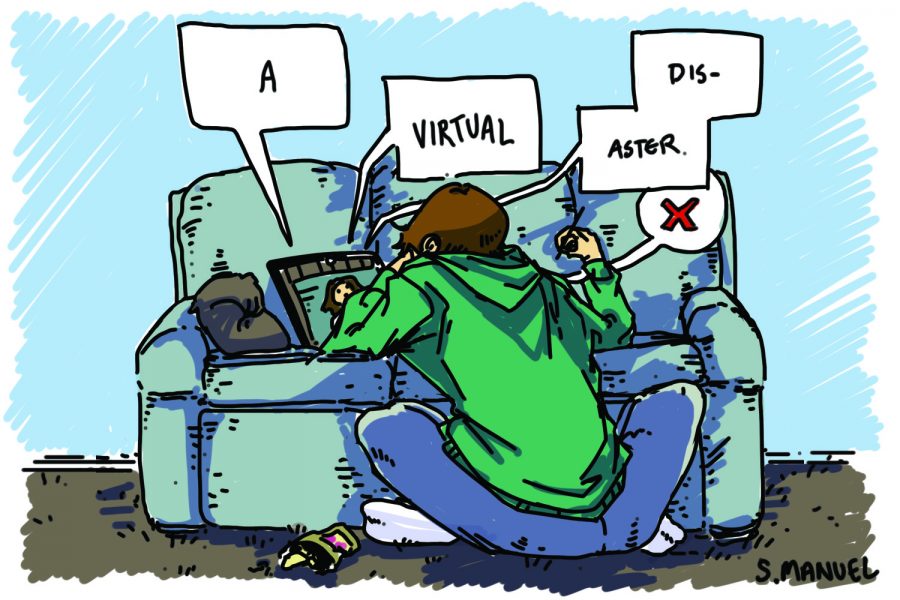A Virtual Disaster?
Students have been led to believe that remote learning is a disaster with the constant difficulties with the changing platform.
October 27, 2020
For the first time in Olathe North history, all Middle and High School students returned to school virtually in response to the Johnson County Department of Health’s recommendation to begin the school year remotely. From the first day onwards, students and teachers alike have experienced difficulties with tasks such as turning in homework assignments and classroom engagement.
Prior to the start of the school year, teachers were required to learn and primarily use the Learning Management System (also known as StudentVUE for students). This software was introduced in March and used for the first time this year, but because of technical difficulties surrounding the interface, the district now allows teachers to use other sites to turn in work, such as Google Classroom.
“I use reliable software, and that software is Google Classroom,” teacher Amanda Keltner said.
While Keltner stated that she uses Google Classroom, many other teachers continue to solely use StudentVUE. In addition to those platforms, many teachers also use other websites for various activities, including tests, quizzes, and miscellaneous studying resources. Students express that they are overwhelmed by how many different websites teachers require them to use.
“There’s like 20 different websites that I have to submit to,” senior Xander Margheim said.
Because of how many websites there are, the criteria for turning work in, such as the file type, can vary, leaving many students confused.
“We sometimes had an assignment where [the teacher] won’t accept it unless it’s in PDF form,” freshman Hannah Rupert explained, ”[The Teacher] made us take a picture of it, and I’m like, how do you upload it as a PDF?”
Students also express that the school work itself has become more difficult.
“Everything’s digital, but I just can’t do digital,” Margheim said. “I just don’t understand it, so I’ve been having to print everything.”
Another issue with online classes is the overall feeling of disconnect. Even though students and teachers are connected via their laptops, teachers believe that online school generally lacks the overall sense of community that so many students and teachers long for.
“In a normal class, I can look out at my students, and if I see that we really need to change with the energy of the room, I could say “get up,” but with online, it’s really hard to read the room,” Keltner said. “I miss the community aspect.”
Overall, while both students and teachers agree that things are difficult right now, they feel that they will eventually adapt to the new learning process. “I’m just trying to make the best out of it,” Rupert concludes. “It’s really hard, but it is what it is.”





